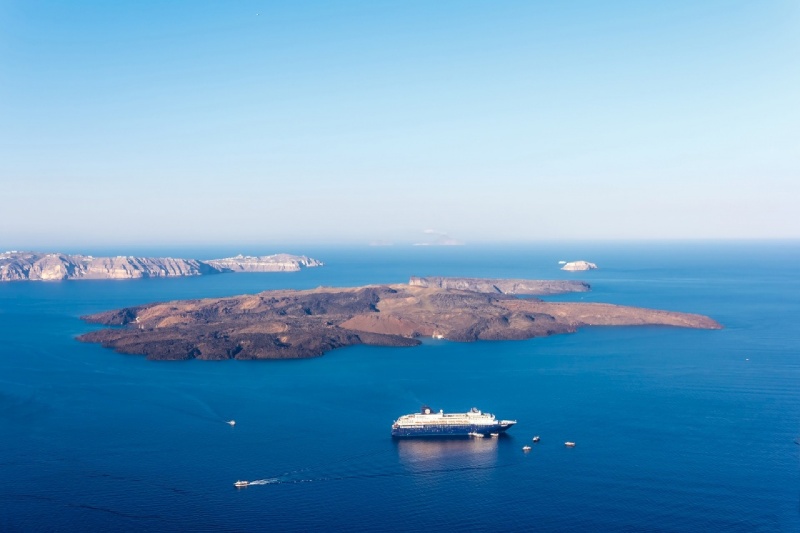A global team of scientists on the island of Santorini has found evidence of an underwater eruption that was previously unknown. This eruption is thought to be one of the greatest in the southern Aegean volcanic arc and older than the one that wiped out the Minoan civilization.
One of the experts on the mission, Paraskevi Nomikou, a lecturer in the geology department at the Aristotle University of Thessaloniki, said that the discovery “is rewriting Santorini’s geological history.”
The team’s findings have been published in the journal “Communications Earth & Environment,” published by the Nature Group.
As to the findings of the report, the researchers discovered a massive pumice deposit known as “Archaeos Tuff,” indicating that a shallow underwater eruption of the ancient volcano of Santorini occurred approximately 520,000 years ago, with a potential variation of 10,000 years.
Three islands were covered in slender pumice deposits left behind after the eruption. Remarkably, this deposit is six times greater than the pyroclastic flow deposits from the huge explosion that happened roughly 3,600 years ago during the Late Bronze Age, which led to the Minoan civilization’s downfall on Crete.
After the paper was published, Nomikou gave an explanation of the ash deposits’ existence on land to the Athens-Macedonian News Agency. She said that this “highlights the importance of deep subsea drilling to reveal all the secrets of island volcanic arcs, especially in densely populated areas such as the Mediterranean.”
It is highly unlikely that the Santorini volcanic complex will see another eruption of this size anytime soon, even though the new data demonstrate that the Christiana-Santorini-Kolumbo volcanic field was far more explosive than previously thought.
The undersea pumice deposit was found using a combination of deep drilling, extensive multidisciplinary datasets, laboratory analyses, and a dense network of marine seismic profiles.
“The findings from the underwater exploratory drilling are changing the current understanding of the volcanic arc of the southern Aegean,” Nomikou said.
This oceanographic mission comprised thirty-two scientists from nine different countries, and it ran from December 2022 to February 2023.





